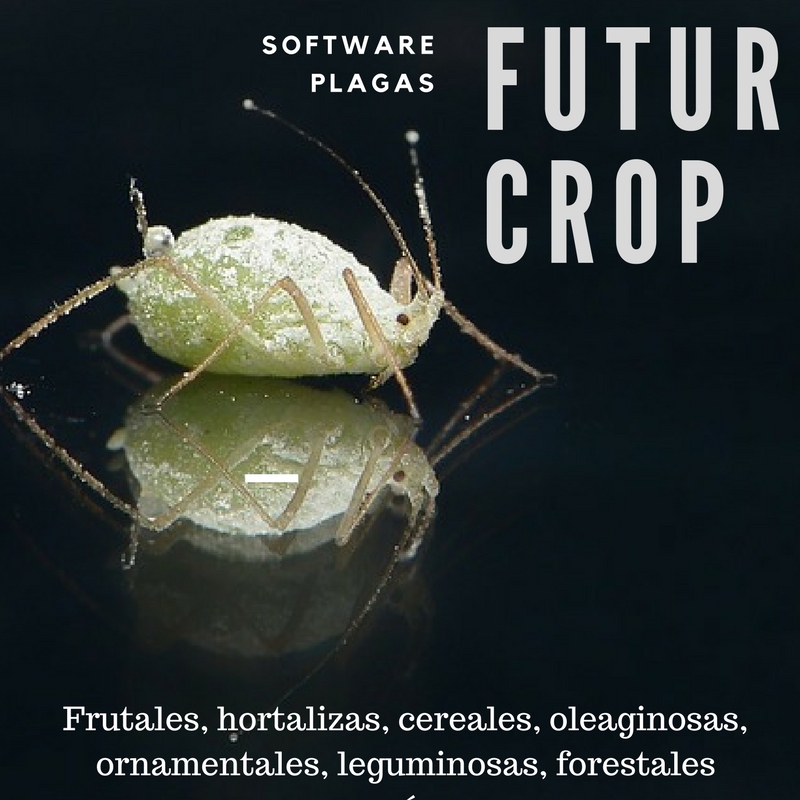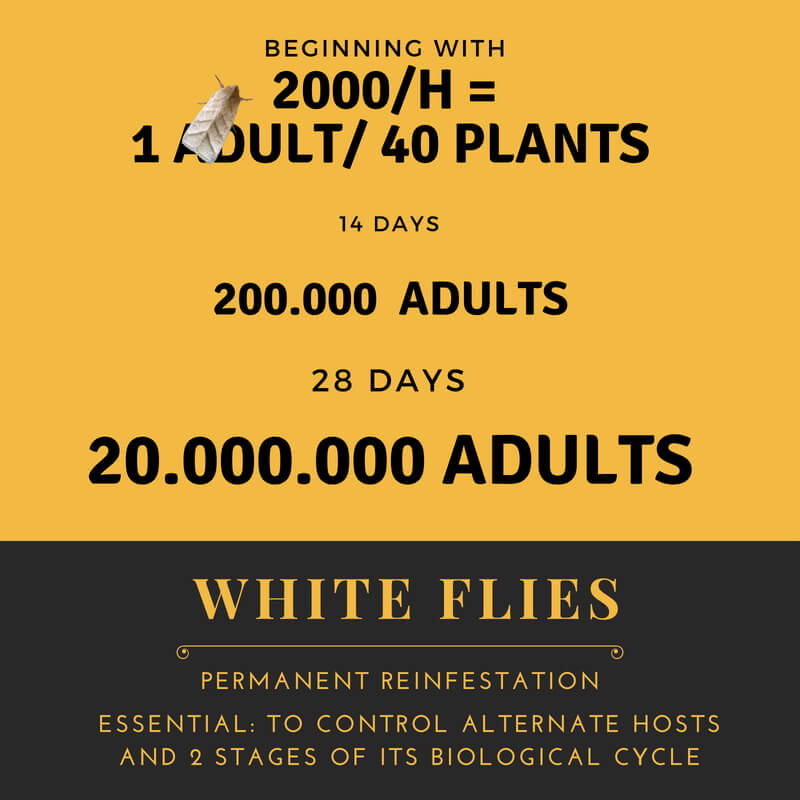Optimized treatment of aphids using FuturCrop

Futurcrop - 04-07-2017
Aphids are one of the most common pests that afect crops, with the greatest economic impact, and which act most quickly. The 4,000 identified specied of aphids cause direct damage to the aerial parts of the plant, but they can also be vectors of phytopathogenic viruses. They attack garden, orchard and cereals. Some 500 species of aphids are harmful to crops and gardens. And more than 200 species are capable of transmitting viruses.
FuturCrop is a software that controls the development conditions for the following species: Aphis fabae, Aphis gossypii, Myzus persicae, Macrosiphum avenae, Rhopalosiphum maidis, Diuraphis noxia.
FuturCrop is decisive for the early detection of the pest, and its effective treatment. As diagnosing the problem early can help minimize the consequences, the software automatically sends infestation risk alarms.
Aphids feed on the sap of plants, which have a lot of sugar and few proteins. Therefore, aphids must consume a lot of sap to satisfy their protein needs. The excess of sugar makes them excrete large quantities of a kind of molasses that attracts ants, which protect, transport and care for aphids.
The survival strategies that aphids have developed make its control difficult:
- During autumn females and winged males mate and lay eggs that hibernate until the following spring. From these eggs females are born that reproduce by parthenogenesis (basically, clones of adults). A female can carry inside its body young clones in development, and these can develop other aphids inside inside them.
- Aphids do not require to pass mild winters as eggs. So there can be adults and nymphs throughout the year.
- Aphids can alternate several generations of asexual reproduction. For example, if the conditions are not favorable for the colony (ie. the plant has died or the environmental conditions are no longer adequate) the new adults are winged females that can give birth by parthenogenesis. They are in fact new founder females that colonize other plants.
- On average, a female produces between 50 and 100 eggs per cycle, and the new specimens only need about a week to mature and start its reproduction.
- In some species, each female aphid can develop up to 40 generations during a single season.
The most frequent treatment of aphids use pesticides. The use of pesticides has increased considerably over the last 35 years, reaching growth rates of 4 to 5.4 % in some regions. In the 90´s there was a decrease in the use of insecticides. In the future it is foreseeable that their use will be gradually restricted by laws and taxes.
Generally speaking, predicting the attack of pests is the most efficient way to combat them, while reducing the use of pesticides and costs. Attention should be paid to and monitor the presence of this pest, especially in dry years with mild temperatures. The rain detach them from the plants, diminishing their damage; while temperatures above 30ºC prevent its multiplication. But climate change and the increasing of temperatures complicates what until now was its usual biological cycle. The ideal solution consists in a software of automatic control of the conditions of pests development, a system of email warnings on this information and a system predicts its biological cycle with 10 days of advance, that allows to plan and treatt before the population reaches severe levels of infestation. Using FuturCrop it is possible to use the appropriate product for the phase in which the aphid is (eggs or adults) and easily to identify the species that affects the crops, so that it is easier to choose the active material to use (which depends on the aphid, since it has been reported different resistance to the pesticides).
In addition to pesticide treatments, there are other pest control methods. In fact, aphids have numerous natural enemies, among which we find predators, parasitoids and fungi, which put a strong pressure to keep aphids populations below damage thresholds. The coccinellids (ladybugs), lacewings and wasps are their natural enemies. But treatments by systemic pesticides eliminate the natural predators. With FuturCrop it is possible to know the exact moment of the biological development of the pest, which facilitates that the release of the organisms of biological control occurs at the moment of greater effectiveness

